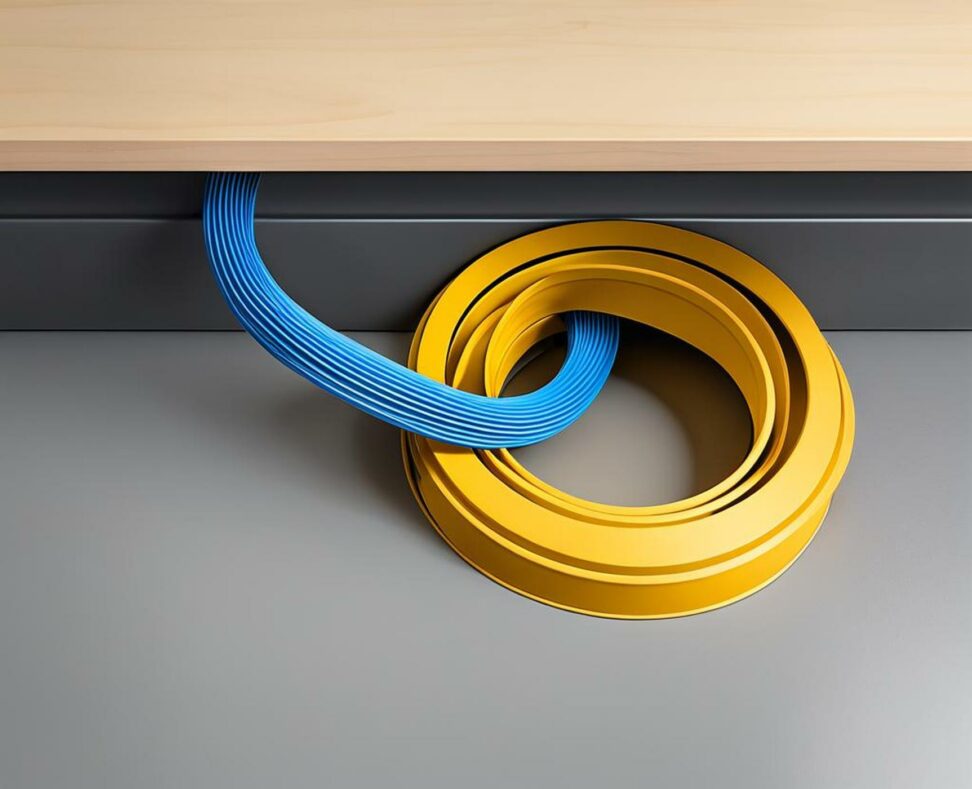DIY Kitchen Sink Drain Gasket Replacement - Fix Leaks Without a Plumber
A leaky kitchen sink can be incredibly frustrating. The constant dripping keeps you up at night, damages your cabinets, and leads to higher water bills. Replacing the old, worn out drain gasket is often an easy fix to stop leaks for good. And the best part? You can do it yourself in just an hour or two, without having to call and wait for a plumber.
In this DIY guide, you'll learn how to identify when your kitchen sink drain gasket needs replacing, what tools and materials you'll need, and a step-by-step process to remove the old gasket and install a new one. With just a little time and effort, you can stop annoying leaks and save the headache and cost of a plumber visit.
Signs Your Kitchen Sink Drain Gasket Needs Replacement
How can you tell when the rubber gasket on your kitchen sink drain assembly needs replacing? Here are a few telltale signs:

- Water leaking from underneath the sink, usually around the drain pipe and U-bend.
- Drain pieces that shift and feel loose when you try to tighten them.
- A damp, musty smell coming from the sink cabinet.
If you notice any of these issues with your kitchen sink drain, the gasket likely needs to be replaced. Over time, the constant exposure to water causes the gasket to degrade and lose its sealing capabilities. Replacing this small part can fix the problem and prevent future leaks.
Gathering Necessary Tools and Materials
Replacing a kitchen sink drain gasket is a quick and easy DIY project. You don't need fancy tools—just the basics you likely already have at home:
- Adjustable wrench
- Tongue-and-groove pliers
- Screwdriver
- Putty knife
- Replacement gasket to match your drain size
- Plumber's putty or silicone sealant
- Old rags
- Bucket
Before starting, locate the hot and cold shut-off valves under the sink and turn them clockwise to the "off" position. This stops the flow of water and allows you to work on the drain. Place the bucket under the drain pipe to catch any leftover water in the pipes when you disconnect the drain.
Removing the Old Gasket
With the water turned off, you're ready to remove the old, leaky gasket. Start by taking apart the drain fittings from the top down, removing any baskets or strainers first. Then use your wrench to loosen and unscrew the nuts holding the drain assembly together underneath the sink.
As you disassemble the pieces, set them aside in order. When you get to the old gasket, pry it out with a flat screwdriver or putty knife. Thoroughly clean the sink drain hole with a rag where the new gasket will be installed.
Tips for Stubborn Drain Fittings
If the nuts or fittings are stuck, try spraying them with WD-40 and allowing it to penetrate for 15 minutes before trying again. For extreme cases, you may need to enlist a second wrench to add leverage when loosening the nuts.
Installing the New Kitchen Sink Drain Gasket
Once the old gasket is removed, installing the new one is straightforward. First, apply a thin rope of plumber's putty or silicone sealant around the drain hole. Then insert the new gasket in the correct orientation.
Slowly reassemble the drain strainer, washers, nuts, and other fittings in the proper order from underneath the sink. Hand tighten the pieces together first before finishing with your wrench—don't over tighten.
Getting the Gasket Seal Just Right
The key is getting the gasket seal just right—tight enough to be watertight but not so tight that it cracks. Go slowly and check your work as you tighten the nuts under the sink.
Turning the Water Back On
Once fully reassembled, turn the hot and cold shut-off valves counterclockwise to turn the water back on. Check carefully all around the new gasket for any drips or leaks as the sink fills. If needed, tighten the nuts a bit more to seal any seeps.
Run the sink and check under the cabinet once more. If all looks dry, the gasket replacement was a success!
Preventing Future Leaks Around the Sink Drain
To keep your sink drain gasket working properly for years to come, here are a few maintenance tips:
- Periodically check under the sink for any new drips or leaks.
- Consider using silicone sealant instead of plumber's putty for a more durable seal.
- Try not to pour grease or harsh chemicals directly down the drain.
- Be gentle when using the sink disposal to avoid shifting the gasket seal.
With periodic inspection and care, your new drain gasket should keep your kitchen sink leak-free for the long haul.
As you can see, replacing a worn out kitchen sink drain gasket is a fairly straightforward DIY project, even for novice homeowners. In just an afternoon, you can stop annoying leaks and water damage under the sink. Next time your kitchen sink starts dripping, try this fix before calling a plumber—and keep more money in your wallet!